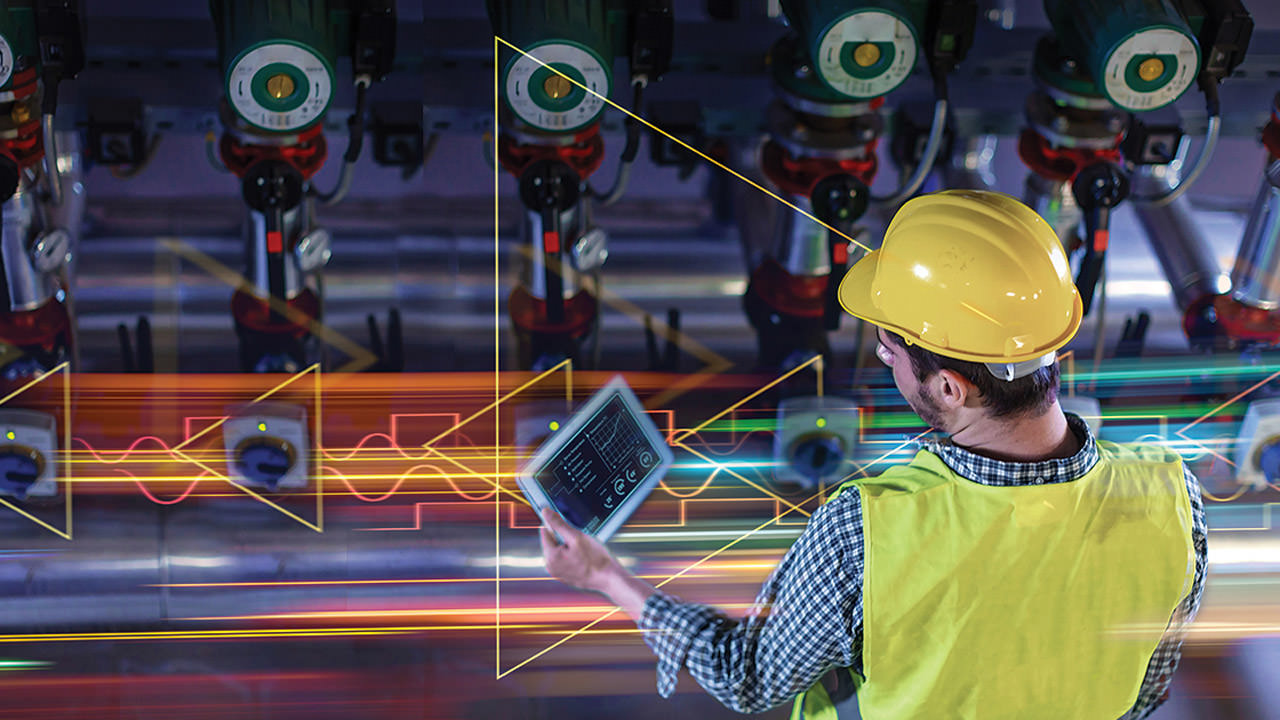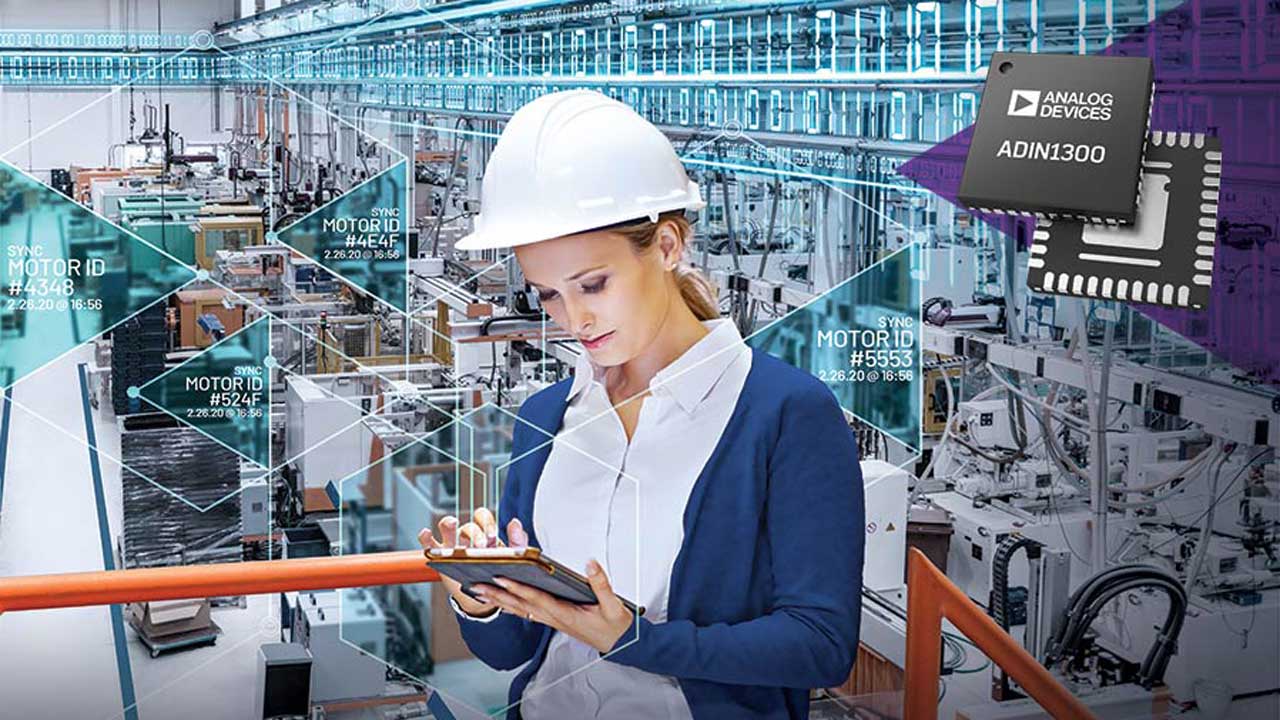TechnologyDecember 4, 2020
10BASE-T1L extends Big Data analytics to edge of networks

The rapid development of 10BASE-T1L components is enabling industrial equipment manufacturers to start developing new Industrial Ethernet-enabled products. The technology looks set to supplant the 4 mA to 20 mA and HART interfaces, and accelerate the adoption of Industry 4.0.
The ratification of the IEEE 802.3cg standard in November 2019 marked the introduction of a new and dramatically different way for factory operators to connect devices at the edge of the network, freeing them from the restrictions of infrastructure based on the legacy 4 mA to 20 mA and HART communications interfaces.
The 802.3cg standard, also known as 10BASE-T1L, is a type of Industrial Ethernet networking physical layer. It provides a way to break down the barriers between the basic operational devices that perform frontline service in the factory or process plant—sensors, valves, actuators, and control—and enterprise data, the vault of bits and bytes where the intelligence of the new smart factory comes to life.
10BASE-T1L networking is set to be an important enabler of the general transformation toward a data and analytics-driven approach to factory operation—the trend known as Industry 4.0 and the Industrial Internet of Things.
Does this mean that industrial engineers should be preparing to replace 4 mA to 20 mA or HART systems with 10BASE-T1L infrastructure now, even though the 802.3cg standard is so new and if so how? Which key factors will determine whether the transition from 4 mA to 20 mA or HART to 10BASE-T1L will be a success?
Data analytics support
Industry 4.0 implementations are sweeping through every modern factory operation. At Industry 4.0’s heart is the desire to profit from the exploitation of big data. New analytics software has begun to transform the way that industry operates and maintains factory equipment and premises. The insights from analytics are often most profound when they uncover patterns in apparently disparate sets of data.
The more data, and the more types of data, that can be reliably captured from devices in the factory, the more opportunities there will be for software to support advanced functions such as condition monitoring and predictive maintenance. And the low data bandwidth of the 4 mA to 20 mA and HART interfaces and the limited scope for integrating them into enterprise computing infrastructures has hampered engineers’ efforts to apply analytics to these legacy end points. The 4 mA to 20 mA and HART technologies also restrict the amount of power that can be supplied to an endpoint and the scope to remotely monitor the device’s operation.
So, the prize to be won by converting existing 4 mA to 20 mA or HART equipment to 10BASE-T1L is data, and the resulting gains in productivity and efficiency that can be made when the data is put to work. Connected, smart factories typically suffer from less unplanned downtime, waste less energy, achieve better utilization of equipment and other assets, and deploy staff more efficiently. 10BASE-T1L connectivity promises to extend these benefits to the remote corners of factories and process plants, where sensors and other endpoints operate out of reach of the enterprise network.
Data rates and power output
The case for installing 10BASE-T1L equipment today rests on the set of capabilities provided for in the 802.3cg standard. A 10BASE-T1L connection offers:
- A maximum data rate of 10 Mbps over a cable length of up to 1 km.
- Up to 500 mW of power to endpoints in Zone 0 intrinsically safe applications, enabling the operation of a much wider range of more sophisticated endpoints than a 4 mA to 20 mA or HART system can support.
- Potential to reuse existing, installed single twisted pair cabling.
- Rich device management options, including the supply of diagnostic data from the connected device and the provision of software updates to it.
- An IP address for every node, extending IoT capability to the edge of factory network. An IP address enables a node to be monitored and managed remotely.
- Integration with enterprise network infrastructure
From a hardware standpoint, implementation of 10BASE-T1L equipment is normally straightforward. That’s because the physical medium for 10BASE-T1L communications is a single twisted pair cable. This might even be the same wiring that already carries 4 mA to 20 mA or HART communications. The 802.3cg standard supports installation in hazardous (explosion-proof) environments.
Early implementations of 10BASE-T1L will likely be hybrid equipment that supports both a legacy interface, such as 4 mA to 20 mA, and the new Industrial Ethernet physical layer.
Success with 10BASE-T1L

ADI Chronous, scalable Ethernet, provides an effective timing mechanism.
Analog Devices, Inc. (ADI) will play an integral role in many customers’ adoption of Industry 4.0 technologies. Our experience suggests that two critical factors will determine whether a 10BASE-T1L project is successful:
- A focus on data
- Network security
Once engaged in the operational details of a 10BASE-T1L roll-out, engineers can easily lose sight of the reason for implementing it to lift the veil on the operation of endpoints, such as sensors, and feed rich streams of data from them to enterprise-level data analytics engines.
It follows that the biggest risk to the success of a 10BASE-T1L project is not at the endpoints themselves, or at the physical infrastructure; the problem is most often at the back end, when inadequate provision is made for handling and using the datasets coming from the newly connected endpoints.
So industrial engineers embarking on a 10BASE-T1L installation should have these questions in mind:
- What types of insights do I plan to derive from the data that will be acquired from sensors and other endpoints?
- How will the data be integrated into enterprise-level control systems? Is the format of the data from endpoints compatible or does it need translation?
- How will insights from data analytics lead to process or system improvements?
The second crucial issue for the engineer to face up to is security. The nature of the threat to endpoints changes dramatically as soon as they are connected via a 10BASE-T1L network. Before, when connected via 4 mA to 20 mA, the lack of complex connectivity reduced the risk of attack.
The superior connectivity provided by the 802.3cg standard, including an IP address for every node, makes every endpoint vulnerable to remote attack via the enterprise network. The inherent, physical firewall that isolates 4 mA to 20 mA or HART endpoints from the network disappears as soon as the factory installs 10BASE-T1L.
This means that individual nodes and the network infrastructure itself have to be secured through the implementation of technologies such as:
- Secure authentication of devices via encrypted device IDs
- Encryption of data transmissions
- Firewalls to bar outside entities from gaining access to secure devices
Lessons of Industry 4.0 projects

10BASE-T1L enables Big Data analytics to the edge of the factory network.
Following the ratification of the 802.3cg standard, the development of 10BASE-T1L-compatible components and equipment has been accelerating. For our part, ADI has been working with industrial equipment manufacturers to ensure that they are able to follow their roadmaps for the introduction of systems that support 10BASE-T1L networking. The expectation in the industry is that products offering 10BASE-T1L capability will be released to the market by mid-2021.
ADI’s long experience in supporting customers’ implementations of new technology will help make these 10BASE-T1L product introductions successful. The structure of our industrial automation division supports technology implementation, since it combines technology-focused development and support staff with market-oriented staff who focus on the customer’s application. This team-based approach marries technical expertise with market insight to produce the right outcome for the customer.
In the case of 10BASE-T1L, this approach will encompass the provision of PHY products and support for the full communications stack. It also takes account of the long commercial lifetimes of industrial products, backed by a roadmap that forecasts production with compatible 10BASE-T1L products to meet the expectations of industrial customers.
The rapid development of 10BASE-T1L components is enabling equipment manufacturers to start developing new Industrial Ethernet-enabled products. Backed by an consortium of industrial companies that support the standard development process, 10BASE-T1L technology looks set to supplant the 4 mA to 20 mA and HART interfaces and accelerate the adoption of Industry 4.0.
Brendan O’Dowd, General Manager Industrial Automation, Analog Devices.

